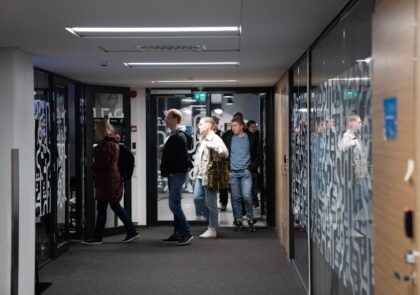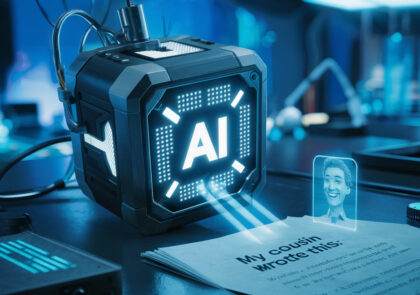
This article delves into how these institutions are pioneering educational strategies that align closely with the evolving demands of the modern workforce, highlighting specific methodologies like the ABC Learning Design and the integration of research, development, and innovation (RDI) activities into the curriculum. The aim is to showcase the critical role of learning design in fostering a student-centered learning environment that enhances academic outcomes and prepares students for the complexities and challenges of the contemporary job market.
Author: Johanna Heinonen
Innovating education through learning design
Future work and learning dynamics demand significant changes in how individual competencies are developed and how education systems should evolve to meet these changing needs. This development is grounded in a broad spectrum of research and theories, emphasising the importance of lifelong learning, interdisciplinary expertise, and the ability to adapt and innovate in new communities and technologically enriched environments. Critical thinking, creative problem-solving, and metacognitive skills are essential elements that constitute an individual’s ability to learn and adapt to a constantly changing world (Trilling & Fadel 2012). These skills, vital across all life aspects, challenge the traditional curriculum focused on knowledge transfer rather than applying knowledge in new and complex situations. Collaboration skills and the ability to operate in various communities are equally crucial, incorporating community-based problem-solving and cooperation across cultural and geographical boundaries (Jenkins 2011). Current work-life demands interdisciplinary expertise and the creative application of knowledge, necessitating lifelong learning and education systems to offer greater flexibility and personalised learning paths. The future education model transforms teachers’ roles from knowledge transmitters to guides and coaches of the learning process (Bogujevci 2021). It promotes a mentor-like approach that encourages students to take responsibility for their learning and develop critical thinking. The integration of digital technologies in teaching is not merely instrumental but part of a broader cultural and cognitive shift, underscoring the need for digital literacy that includes evaluating the reliability and relevance of information, an essential skill in the information society.
Learning design focuses on creating educational experiences that cater to these evolving needs, incorporating critical thinking, problem-solving, and digital literacy into curricula (Rumahlatu et al. 2021). It moves beyond traditional knowledge transfer, advocating for teaching methods that engage students in applying knowledge in complex situations. This approach aligns with fostering collaboration skills and integrating digital technologies in education, aiming for a more profound cultural and cognitive shift towards personalised, lifelong learning pathways and preparing students for future challenges.
In the rapidly evolving landscape of higher education, learning design emerges as a beacon of innovation, guiding institutions toward more effective, engaging, and relevant teaching methodologies. At the heart of learning design lies the principle of creating intellectually stimulating educational experiences that resonate deeply with the student’s future professional endeavours. Laurea University has pioneered the ABC Learning Design method, a framework that encourages educators to develop courses encompassing various learning activities. This method ensures that each course is tailored to foster critical thinking, creativity, and problem-solving skills, essential competencies in the modern workplace (Laurea).
Bridging theory and practice
Integrating Research, Development, and Innovation (RDI) with learning design approaches can significantly enhance the development and delivery of more accurate and qualitative outcomes for companies. Through learning design, RDI activities can become more user-centred, ensuring that educational programs and projects closely align with industry needs and challenges. This approach facilitates a deeper understanding of real-world applications, encourages innovation, and fosters the development of practical and forward-thinking solutions. By bridging the gap between academic research and market expectations, learning design in RDI contexts ensures that companies benefit from theoretically sound, practically applicable insights tailored to address specific industry demands.
Also, partially unconsciously, LAB has applied learning design by integrating RDI activities into its curriculum, enriching the academic journey with practical, real-world applications, and co-creating development projects with industry representatives. This approach enhances accurate development projects that provide quality and real help for companies, improves the learning outcomes on the education side and empowers students to contribute meaningfully to their fields of study through hands-on projects and collaborations with industry partners.
Adopting learning design signifies a shift towards an educational model that values adaptability, lifelong learning, and the ability to navigate the complexities of the global job market. By focusing on developing hard and soft skills, LAB can prepare its students for the unpredictable demands of future careers, emphasising the importance of continuous learning and professional growth.
A vision for the future of higher education
The learning design approach underscores the transformative potential of learning design in higher education. By prioritising student-centred learning, integrating cutting-edge RDI activities, and preparing students for the challenges of the future workforce, these institutions are not just educating; they are shaping the innovators, leaders, and problem-solvers of tomorrow.
As we look toward the future of education, it is clear that learning design will play a crucial role in shaping curricula that reflect and respond to the changing landscape of work and society. The experiences from learning design serve as a compelling blueprint for other institutions striving to make education more relevant, engaging, and impactful in the 21st century.
References
Bogujevci, E. 2021. ” Mä oon hirmu ylpeä tällasesta nimikkeestä”: toisen asteen opettajien tunteet HAHKU-mentorina toimimisesta. Master’s thesis. Jyväskylän yliopisto, Kasvatustieteiden laitos. Jyväskylä. Cited 22.2.2024. Available at http://urn.fi/URN:NBN:fi:jyu-202110255340
Jenkins, H. 2011. Convergence Culture. Where Old and New Media Collide. Revista Austral de Ciencias Sociales. 20, 129-133.
Laurea. ABC Oppimisen muotoilu ja Laurean ABC-kortit. Cited 22.2.2024. Available at https://www.laurea.fi/koulutus/pedagogisia-innovaatioita/abc-oppimismuotoilu/
Rumahlatu, D., Sangur, K., Berhitu, M. M., Kainama, S. Y., Kakisina, V. V., & Latupeirissa, C. 2021. Resource based learning design thinking (RBLDT): a model to improve students’ creative thinking skills, concept gaining, and digital literacy. Cypriot Journal of Educational Sciences, 16(1), 288-302.
Trilling, B., & Fadel, C. 2012. 21st-century skills: Learning for life in our times. San Francisco: John Wiley & Sons.
Author
Johanna Heinonen is a Senior Lecturer and RDI Specialist at LAB University of Applied Sciences. She is particularly passionate about studying how digital tools and applications could be used more efficiently. She is writing her PhD in about co-creational elements of caring in chat-based customer service encounters.
Illustration: https://pxhere.com/fi/photo/1379760 (CC0)
Published: 1.3.2024
Reference to this article
Heinonen, J. 2024. Innovating education through learning design. LAB Pro. Cited and the date of citation. Available at https://www.labopen.fi/lab-pro/learning-design-as-the-future-of-education/






